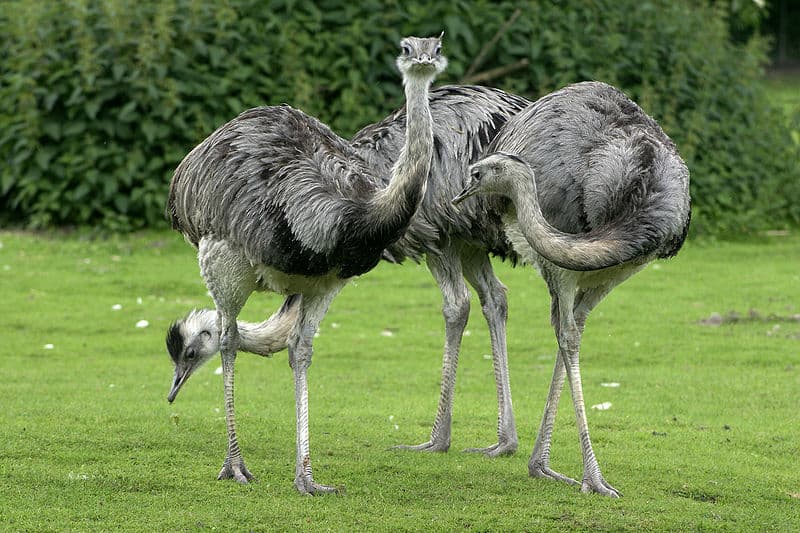
Rhea Facts
- Most notably, in terms of height, the incredible Rhea ranks as the third largest bird in the world. That occurs because the creature follows only its distant relatives, the ostrich and emu, in terms of sheer physical size.
- Further, only three extant species of this animal currently remain recognized by scientists. Formerly, the same experts acknowledged two, but scientists later determined that a third existed, following extensive genetic testing.
- Also, two of the three existing species presently list as Near Threatened with the IUCN. Pending further evaluation of conservation efforts, this ranking easily might change, sadly, for the worse.
- Finally, the Rhea presently faces several distinct threats to its continued existence. The greatest dangers these incredible flightless birds face, however, consist of the dual threats climate change and habitat loss.
Related Articles
Public Domain Image
Rhea Physical Description
Firstly, the plumage of the marvelous Rhea generally presents a fascinating combination of brown and gray. The amazing animal also has long, powerful legs, as well as a long neck, similar to its cousin the ostrich.
In addition, the each of the three species shows a moderate degree of sexual dimorphism. Due to this characteristic, the males grow slightly larger than the females. The males sometimes attain a height of as much as 67 inches (170 cm). However, the difference in size between the the genders remains small.
Further, in weight, some members of this astounding genus occasionally weigh as much as 88 lb (40 kg). Finally, it has one more trait that distinguishes it from most birds. This fascinating animal has only three toes on its feet.
- Kingdom: Animalia
- Phylum: Chordata
- Class: Aves
- Order: Rheiformes
- Family: Rheidae
- Genus: Rhea
Public Domain Image
Rhea Distribution, Habitat, and Ecology
First of all, the amazing Rhea evolved as solely native to quite specific portions of the continent of South America. More specifically, this area includes the countries of Bolivia, Argentina, Chile, Brazil, Peru, and Paraguay.
Additionally, the impressive bird remains primarily vegetarian, preferring leaves, seeds, plants, and roots. It will, however, also eat a wide variety of insects, small rodents, and even reptiles. These it feeds on opportunistically.
Furthermore, the animal consistently proves itself to be quite adaptable t different areas. Nevertheless, it appears to prefer areas of open grasslands for its habitat. Most ideally, these are placed near large bodies of water.
The Rhea is generally a silent animal, except during the breeding time. Then, the male attempts to attract a mate with a loud, booming call. The animals also remain polygamous, and the male may mate with anywhere from 2-12 females each season.
The eggs are also large in size, and clutches may number 10-60 eggs at a time. Finally, after hatching, the young reach adult size within six months, but will not breed until they are at least two years old.
Species Sharing Its Range
Check out our other articles on 5 Practically Perfect Penguins, Mary River Turtle, Coudersport Ice Mine, Dumbo Octopus, Indian Pipes, Quokka, Happy Face Spider

